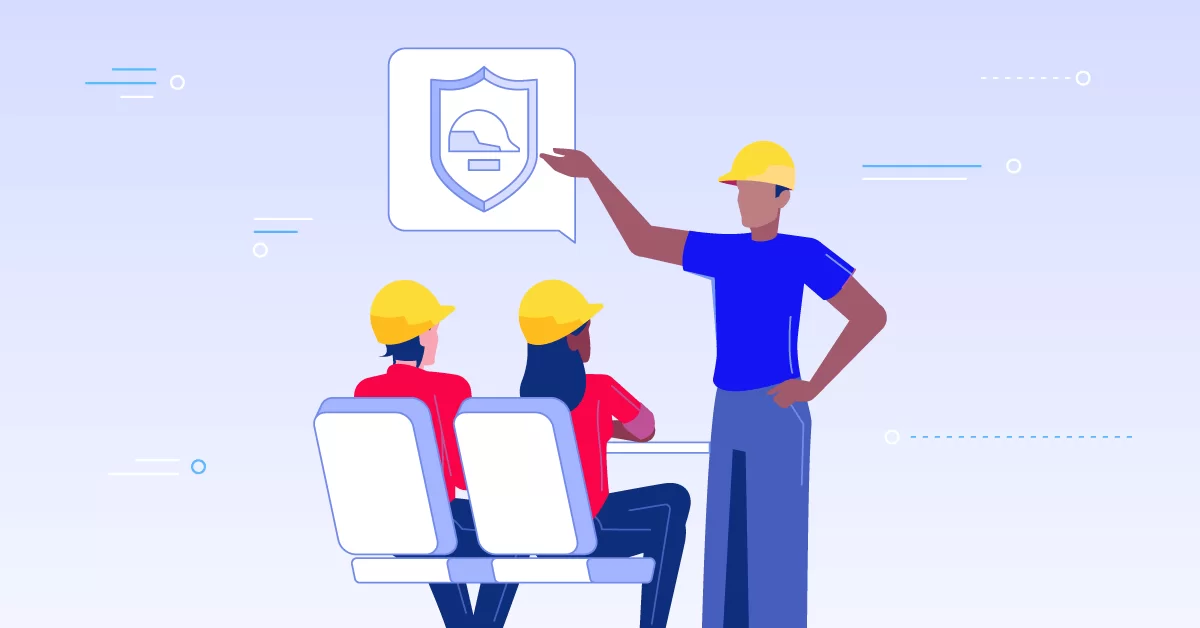If this is the first time that you are coming across this term, you’re in luck! Below you’ll not only find everything you need to know about this growing training methodology, you’ll also learn more about the strategies and techniques you can use to include experiential learning activities in your courses.
What Is Experiential Training?
The ancient Chinese philosopher Confucius once said:
“I hear and I forget. I see and I remember. I do and I understand.”
Experiential training is all about learning by doing and understanding.Share on
There are a number of formal definitions for the term “experiential learning” out there. However, the best one, not to mention the easiest one to understand, is:
Learning by doing!
If we use this definition to try and understand what experiential learning involves, then we can see that the two components of the definition are mutually reliant on each other:
- Learners can learn something, only by doing the tasks
- For learners to be able to do the tasks, they must first learn how to do them
With this idea in mind, any training initiative, course, interaction or program designed to facilitate teaching and learning through “doing” and “experiencing”, can be considered experiential training. The primary distinction between experiential learning and traditional, non-experience-based training is that, while the latter places a lot of emphasis on learning before doing; the former facilitates learning through doing.
But why would you want this anyway?
Experiential Training Benefits and Advantages
Today’s business environment is highly competitive, characterized by shorter product and service lifecycles, and faster turn-around times. In such an environment, traditional training approaches aren’t as responsive to business needs as they used to be.
That’s why organizations are including experiential training activities in their corporate learning initiatives:
- They produce real results faster than predominantly classroom-focused program
- They expose earners to company-specific, real-world situations, not abstract constructs that may not apply to their job
- While traditional training eventually produces work-ready individuals, who can immediately fail to perform their roles and then eventually undergo re-training, the experiential learning model allows learners to “fail fast”, prompting immediate remedial training
- Quizzes, exercises, assignments, and tests can’t mimic a shop floor or call center desk to 100% accuracy. By taking learning out of the training center and putting it into the workplace, experiential learners can self-improve by practicing the skills they need. Repeatedly taking the same quiz or test will not enhance practical skills to the same extent as hands-on activities!
While experiential learning does deliver many benefits when compared to traditional classroom-based teaching, all of these advantages translate into two very crucial outcomes that most businesses look for in any training program:
- Faster turnaround for a fully trained workforce: Failing fast means more immediate remediation, which in turn makes learners work-ready faster
- Cost effectiveness: The time saved in equipping learners with job-ready skills often directly translates into bottom-line savings.
These last two benefits alone can make a solid business case for organizations to start embracing experiential learning activities in their training programs.
Experiential Training Techniques, Strategies and Activities
Every organization is unique in its training needs, and therefore each company will likely have their own way of implementing experiential learning strategies. However, here are some activities and approaches that you can consider when tailoring your own experiential learning initiatives:
1) Simulations: This experiential training technique uses electronic, mechanical or software-based activities to simulate a real-world situation to which a learner must react. Since the simulations can vary depending on any number of parameters, simulated training offers a great way to educate staff on even the most remote hypothetical scenarios that they might have to deal with.
2) Case Studies: These are great examples of experiential learning that are based on real-life instances, situations that have transpired in the past. By exposing trainees to what happened in the past, using illustrative case studies, trainers can give them invaluable insight into the appropriate behavior required to deal with similar situations, and the blow-back it may have.
3) Role Playing: These are experiential training activities designed to help employees appreciate specific work situations from perspectives different than their own. For instance, a Customer Service manager might play the role of a customer, in order to experience the impact that a particular policy or procedure might have on the customer.
4) Sensitivity Training: One highly effective experiential training strategy to enhance employee self-awareness and confidence is sensitivity training. The objective is to design activities that help learners appreciate how others (peers, managers, customers) see them. As a result, workers become equipped with the skills and knowledge of how to deal with others more appropriately.
5) Gaming: Experiential learning games are a popular way to help employees learn by doing. The games can be organized in a way that individuals and groups play with each other, by either collaborating or competing, like in the real world. This process can teach them valuable lessons about how to deal with on-the-job situations. As part of this experiential training technique, motivation tools, such as points and merit badges, can be awarded to make the game more engaging for the learners.
6) On Job Training (OJT): Of all the experiential learning strategies out there, OJT is probably the one that offers the most realistic training experience. By designing experiential activities for groups of trainees, based at the actual location where they will be working, OJT exposes staff to “business as usual” situations – real customers, peers, and supervisors, real products, and services – that they will continue to deal with once training is completed.
When deciding which of these strategies and activities you should use, it is vital to not lose focus of what the central idea of experiential training is all about: Learning by doing. So, if your specific training needs aren’t in alignment with a particular technique discussed above, you shouldn’t attempt to “force fit” it into your training strategy.
A great example of the above would be a training program for shop-floor staff, where the focus is on teaching new and seasoned workers how best to use a complex new device on the factory floor. For this particular application, case study techniques might not be the best fit. Instead, you could include experiential learning activities for adults using simulations and OJT for much better outcomes.
Do It Right: Experiential Learning
The need for rapid results and quick turnaround of fully trained workers is driving corporate trainers to include innovative training strategies in their programs. As a result, experiential training is now fast becoming a standard approach to train effectively.
By exposing learners to more real-world material early in the training program, the experiential learning model is able to deliver well-trained workers at a faster pace than conventional classroom-based training or an eLearning course.
If you are new to the world of course design, there’s one thing that you should always remember: learners respond better when doing! The best way to encourage learning by doing is through the experiential learning strategies discussed above.


